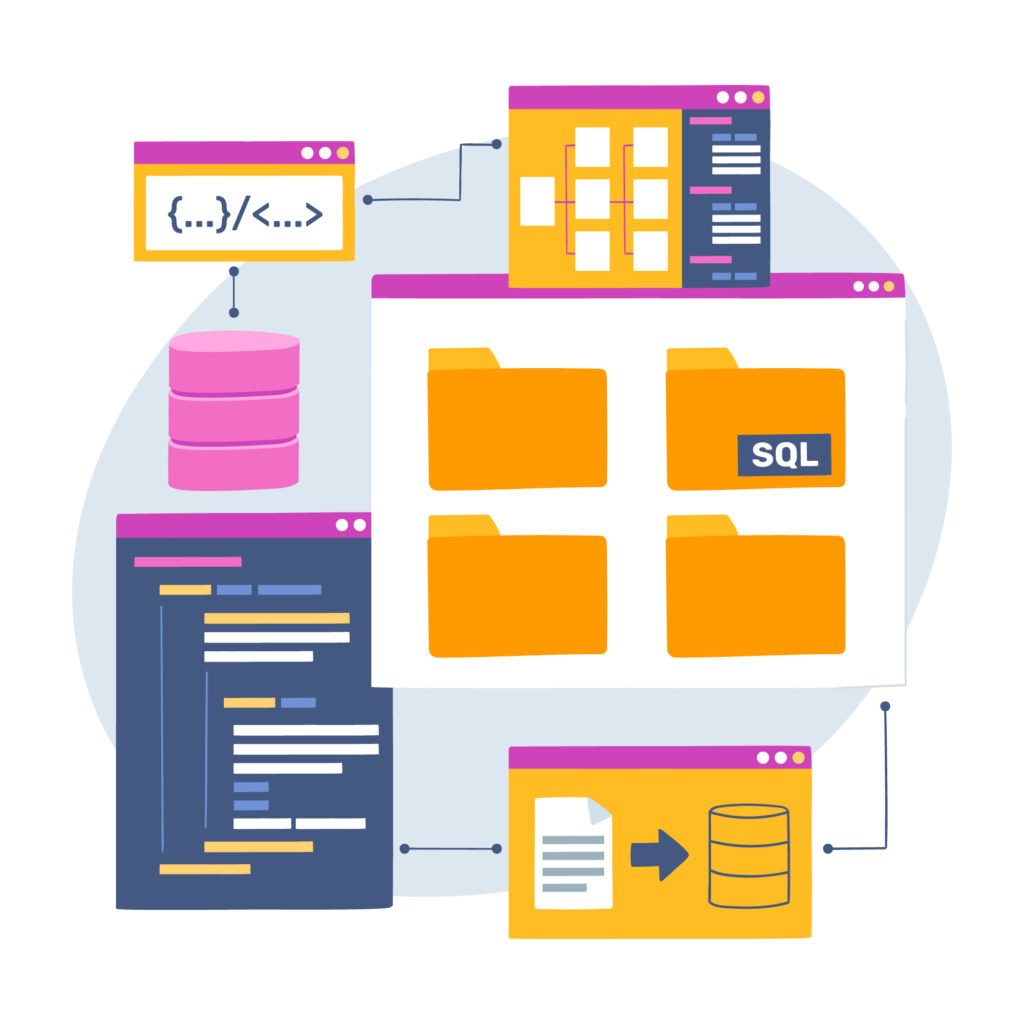The volume and variety of data generated today are exploding unprecedentedly. Organizations are struggling to collect, store, process, and analyze massive amounts of structured, semi-structured, and unstructured data from an ever-growing number of sources. Traditional data management architectures like data warehouses are buckling under the strain. This has led to new architectures like data lakes and data lakehouses to meet modern data challenges.
The Limitations of Traditional Data Warehouses
For decades, the data warehouse has been the dominant architecture for analytics. Data from various sources is extracted, transformed and loaded into a structured data store optimized for reporting and analysis. This approach works well for structured and lightly transformed data but has limitations:
- Inflexible schema: The schema is predefined and rigid. Adding new data sources or analytics use cases requires changes to schema which adds time and cost.
- Batch processing: Ingestion and transformation is done via periodic bulk loads which adds latency. Near real-time analytics is not possible.
- Scaling challenges: It is expensive and complex to scale compute and storage as data volumes grow.
- Only structured data: Unstructured and semi-structured data is hard to ingest and analyze. This data is usually discarded.
The Rise of Data Lakes
To overcome these challenges, the data lake concept emerged. Data lakes are designed to store massive amounts of raw structured, semi-structured and unstructured data in its native format in object storage like Amazon S3 or Azure Data Lake Storage. Some key aspects:
- Schema-on-read: Data is stored as-is without applying a schema upfront. Schemas are applied at query time. This makes ingestion fast and flexible.
- All data types: Stores structured, semi-structured and unstructured data like JSON, XML, AVRO, Parquet, images, video, etc.
- Low cost storage: Uses low-cost object storage to store limitless volumes of data. Compute and storage can scale independently.
- Streaming and batch: Supports real-time streaming data and batch data via pipelines. Enables real-time analytics.
- Accessibility: All data is readily available for analysis without lengthy transformations. Enables ad-hoc analysis.
Challenges with Data Lakes
While data lakes solved some key problems, they introduced new challenges:
- No data governance: Lack of governance around data security, access control and data quality. Can turn into data “swamps”.
- Discovery and metadata: Massive data volumes make it hard to find, understand and trust the data. Limited metadata and cataloging capabilities.
- Unstructured data: While it can store any data, analytics on unstructured data is complex, slow and expensive.
- Data isolation: Data exists in silos, making it hard to integrate data and gain organization-wide insights.
The Data Lakehouse Emerges
The data lakehouse aims to combine the benefits of data warehouses and data lakes while avoiding their limitations. A data lakehouse is a single repository that can store structured, semi-structured and unstructured data and make it available for both operational and analytical workloads. Key aspects include:
- Schema flexibility: Supports schema-on-read for big data analytics as well as schema-on-write for transactional workloads. Gets best of both worlds.
- Metadata and governance: Provides data cataloging, data quality and governance capabilities lacking in data lakes.
- Refined structure: Applies more structure than data lakes for manageability while retaining flexibility.
- Analytics optimized: Store data in analytics-ready formats like Parquet to improve performance over raw object storage.
- Unified analytics: Unifies data in a single platform to drive insights across siloed data.
- Scalable and cost-effective: Leverages low-cost object storage and scale-out architecture to handle growth.
Key Components of a Modern Data Lakehouse

A modern data lakehouse brings together a number of technologies to provide a unified, scalable and governed data environment:
Object Storage
The foundational storage layer is cloud-native object storage like Amazon S3, Azure Data Lake Storage or Google Cloud Storage. This provides:
- Scalable and cost-efficient storage of any type of data
- Durability, availability and resilience built-in
- Ability to store trillions of objects
- Metadata tagging capabilities
- Security and access controls
Compute Engine
A distributed compute engine like Apache Spark, Databricks or Snowflake provides:
- Scalable distributed processing of data in object storage
- In-memory caching and query optimization
- Stream processing capabilities
- Notebook environment for exploration and visualization
Metadata Catalog
A metadata catalog like Apache Atlas or AWS Glue Data Catalog enables:
- Discovery of data via searchable business glossary
- Ability to assign schemas and add metadata tags
- Data lineage tracking
- Global namespace to find data across storage silos
Orchestration
Orchestration tools like Apache Airflow, Prefect or Argo help:
- Build and manage complex data pipelines
- Move data between object storage and compute engines
- Reproducible and versioned pipeline definitions
- Visual workflow construction
Key Benefits of a Data Lakehouse
With the right implementation, a data lakehouse delivers significant benefits:
Agile and flexible
- Faster experimentation and innovation due to schema-on-read flexibility
- Store now, figure out schema later approach helps adapt to change
Unified analytics
- Consistent view of data assets across the organization
- Drive insights by connecting disparate data
Scalable and cost-efficient
- Decouple storage and compute for independent scaling
- Leverage low-cost object storage for data at rest
- Only pay for resources used
Governed self-service
- Catalog, lineage and quality controls provide trust
- Enable self-service access to data without anarchy
Real-time and streaming
- Ingest and analyze streaming data alongside batch data
- Take timely action based on real-time insights
Future-proof
- Cloud-native architecture built for flexibility
- Designed to handle a variety of current and future data workloads
Key Considerations for Implementation
Implementing an effective data lakehouse takes careful planning and execution:
- Start small: Focus on high-value use cases first and expand gradually. Maintain as much existing infrastructure as possible.
- Data governance: Get data governance, security and access controls right from the start. Don’t allow unmanaged data sprawl.
- Metadata strategy: Plan for rich, standards-based metadata to enable discovery and trust. Automate metadata creation via pipelines.
- Master data management: Identify master data sources and stewardship processes early. This is key to unified analytics.
- Skill development: Use cloud services to reduce need for specialized big data skills. Train staff incrementally on modern architectures.
- Change management: Get buy-in across the organization through effective change management and communication.
The Future of the Data Lakehouse
The data lakehouse represents the future of modern data management. As organizations recognize the value of unified analytics, adoption of cloud-native data lakehouses will accelerate. AWS, Azure, GCP and Databricks are all investing heavily in this space. Key trends include:
- Continued convergence of capabilities from data warehouses, lakes and catalogs into a unified platform
- Further optimization for analytics with caching, indexing and materialized views
- More focus on ease-of-use, automation and machine learning to simplify management
- Tighter integration with visualization, business intelligence and data science tools
- Growth of supporting ecosystems for governance, metadata, pipelines, etc.
- Increased adoption of open formats like Parquet and Delta Lake for interoperability
The data lakehouse architecture establishes a flexible, scalable and governed foundation to gain valuable insights from all data sources. Organizations that leverage data lakehouses will gain significant competitive advantage through unified analytics. The future is bright for this modern paradigm.
The Emergence of the Data Lakehouse – FAQ
What is a data lakehouse?
A data lakehouse is a data management architecture that combines the best elements of a data warehouse and a data lake. It provides a unified platform to store, process, and analyze structured and unstructured data.
How does a data lakehouse differ from a data warehouse?
A data lakehouse differs from a traditional data warehouse in terms of its architecture and data handling capabilities. While a data warehouse follows a structured approach, a data lakehouse allows for the storage and processing of both structured and unstructured data. It also supports faster data ingestion and provides better scalability.
What are the benefits of using a data lakehouse?
Using a data lakehouse offers several benefits, including:
- Better data management: A data lakehouse provides a unified platform for managing data from various sources, making it easier to ensure data quality and integrity.
- Advanced analytics: With a data lakehouse, data teams can leverage both structured and unstructured data to perform more comprehensive analytics and gain deeper insights.
- Cost-efficiency: The cloud data warehouse component of a data lakehouse allows businesses to enjoy the scalability and cost-effectiveness of cloud storage and processing.
- Increased agility: The flexibility of a data lakehouse enables faster data discovery, allowing data scientists and analysts to quickly explore new data sources and experiment with different data types.
How does a data lakehouse ensure data quality?
A data lakehouse ensures data quality through various measures. It provides the capability to enforce data governance policies, perform data validation, and implement data quality checks and controls. Additionally, the centralized nature of a data lakehouse allows for the implementation of data management practices that promote data integrity.
What types of data can be stored in a data lakehouse?
A data lakehouse can store both structured and unstructured data. Structured data refers to organized and easily searchable data, while unstructured data refers to data that does not have a predefined schema, such as text documents, images, videos, social media posts, and logs.
What is the role of data scientists in a data lakehouse?
Data scientists play a crucial role in a data lakehouse environment. They utilize the diverse data sources available in the data lakehouse to develop and train machine learning models, perform advanced analytics, and gain valuable insights for making data-driven decisions.
Citations:









Leave a Reply